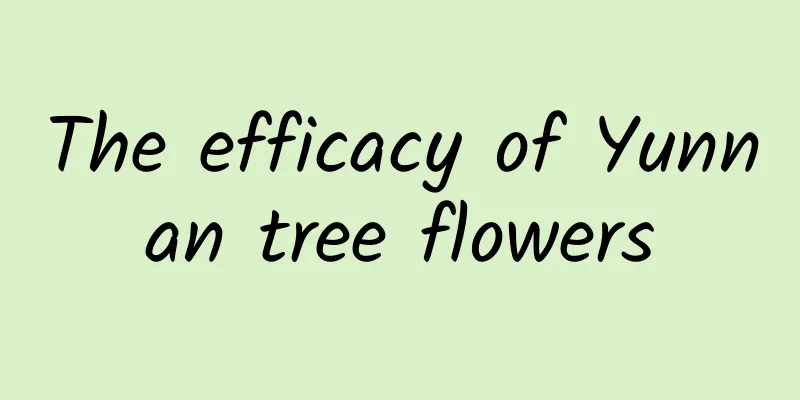The efficacy and function of Cimicifuga heracleifolia

|
As a very common Chinese medicinal material in daily life, Cimicifuga foetida has high medicinal and nutritional value to the human body, and it is not too difficult to purchase. Let’s analyze several aspects of Cimicifuga foetida below. [Other names] Spotted hemp, hemp sand vegetable, white flower root, rice vegetable, earthenware angelica (Guizhou Folk Medicine), cat turning over the steamer, moving the steamer upside down (Guizhou Herbs). [Source] It is the root of the white drum nail of the Asteraceae plant. Harvested in autumn and sun-dried. [Original form] Perennial herb, 35 to 80 cm tall. There is a short rhizome underground, surrounded by clusters of fibrous roots, which are slender and soft, and the branch roots are thin and light yellowish white. Stem erect, cylindrical, usually simple, rarely branched, pubescent throughout. Leaves are opposite, sessile, or nearly sessile; leaf blades are linear-lanceolate, 6-12 cm long, 1-2 cm wide, pointed at the apex, acutely cuneate at the base, with irregular sparse serrations on the margin, sometimes deeply lobed, with 3 distinct veins near the base, dark green above, yellow-green below, with pus spots, and densely covered with white bristles on both sides. The capitula is arranged in a tight cyme and is terminal; the involucre is bell-shaped and imbricately arranged, with about 10 bracts of varying sizes, rectangular, pointed at the apex, and membranous and dry edges; the receptacle is bare, with 5 to 6 tubular flowers on it, bisexual, purple, and 5-lobed at the apex; there are 5 stamens, the anthers are more or less fused, surrounding the style, with attached pedicles at the top and obtuse at the base; the stigma is protruding, 2-lobed, and the lobes are cylindrical. Achenes have 5 ribs, pappus uniseriate, spiny. Flowering period is from August to October. [Habitat distribution] It grows wild on moist hillsides, grasslands, or beside streams. Distributed in provinces of North China, Northeast China, East China and Central and South China. 【Chemical composition】 Contains coumarin. 【Properties and flavors】 "Guizhou Folk Medicine": "Warm in nature, bitter in taste, non-toxic." 【Functions and indications】 Treat colds, malaria, and intestinal parasites. [Usage and Dosage] For oral use: decoct in water, 3 to 4 qian. [Additional prescription] ① Treat colds: 4 grams of Cimicifuga heracleifolia, 3 grams of Pueraria root and 3 grams of Bupleurum chinense. Take it in decoction. (Guizhou Folk Medicine) [Remarks] The whole herb of this plant was once used as perilla in southern Jiangsu, and its commercial name was "pointed perilla". See the entry for "Perrin". 【Excerpt】 《*Dictionary》 Cimicifuga heracleifolia is a medicinal material that has existed for a long time. It is recorded in many Chinese medicine books, which shows that Cimicifuga heracleifolia does have good medicinal value. |
<<: The efficacy and function of bamboo poles
>>: The efficacy and function of red mulberry
Recommend
The efficacy and function of silkworm molt
Silkworm slough is a kind of medicinal material, ...
The efficacy and function of apricot blossom
In today's society, health preservation seems...
From a scientific point of view, what exactly is "Tai Sui"?
Tai Sui has two meanings. "To disturb Tai Su...
Why do rubber bands turn cold and purple when they are tied around fingers?
We often see news reports about 3-4 year old chil...
What is the medicinal value of abalone shell?
Speaking of abalone, everyone knows that it is an...
Which is better, Fritillaria cirrhosa or Fritillaria cirrhosa?
Fritillaria is a perennial herb. It is a common m...
Mycoplasma outbreak in China? Maybe it's just an illusion
The incidence of false negative and false positiv...
Can Wangbuliuxing be drunk in water?
Vaccaria is a kind of dry seed, which has the eff...
No wonder I don’t like carrots, they are from the same family as coriander!
Audit expert: Shi Jun Doctor of Botany, well-know...
Are invasive alien species necessarily villains?
Produced by: Science Popularization China Author:...
How often should Tianma be taken?
In daily life, people's understanding of Gast...
Millions of IPs Create Science and Technology Talents to Strengthen the Country | New Energy Locomotives: Heading Towards a Green Future
Every development of science and technology will ...
More than 1 million Chinese people have died from it! Huaxi experts teach you how to stay away from it scientifically
Start to refuse smoking from the first cigarette,...
The efficacy and function of Shui Chaoyang
As people's research on traditional Chinese m...









